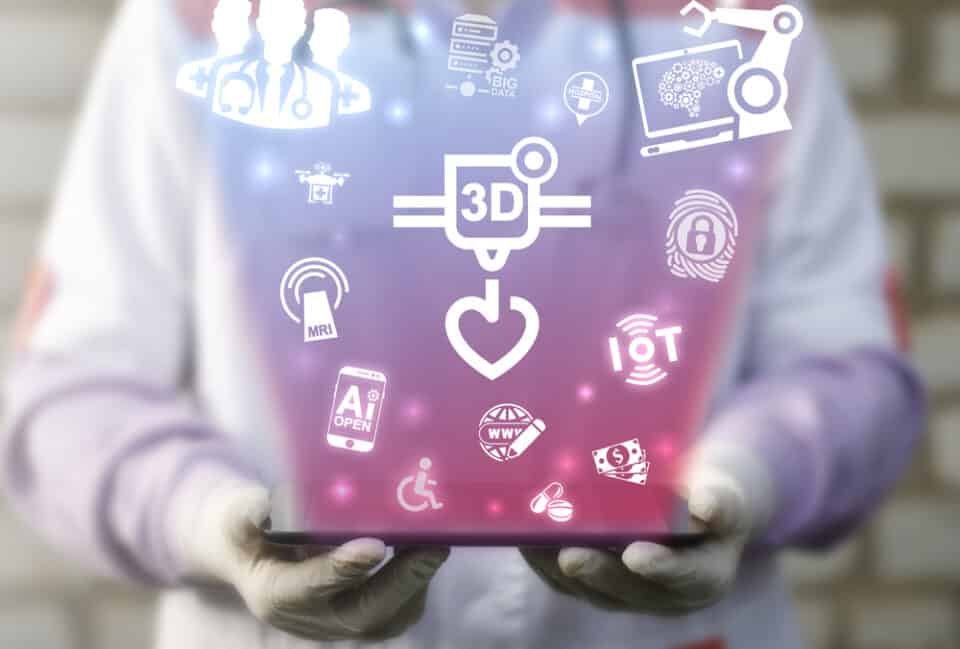IoT (Internet of Things) and 3D printing are two powerful technologies that are rapidly changing the way we live, work, and communicate. While these two areas have traditionally existed independently, there is a growing trend for them to converge in order to fuel innovation.
At their core, IoT and 3D printing both make use of state-of-the-art technology to connect people with objects in new ways. For example, 3D printers can create physical models based on digital designs that can be shared over the internet or manipulated with virtual reality software. Likewise, IoT devices allow us to control electrical appliances remotely via smartphones or smart watches.
As these technologies continue to develop at an incredible pace, it is clear that they will become even more integrated in the coming years. Experts predict that we will see a rise in products and services that combine the best aspects of IoT and 3D printing, such as smart devices that can be customized to fit our needs.
Whether you are a consumer, entrepreneur, engineer, designer or researcher, there are many exciting opportunities to explore in the worlds of IoT with 3D printing. So if you want to stay ahead of the curve, keep an eye on these two emerging fields and get ready for some truly groundbreaking innovation!
What is 3d printing in IoT?
3D printing in IoT is a process of creating three-dimensional objects by using a printer that deposits materials in layers according to a digital file. This technology has been used for prototyping and manufacturing in various fields such as healthcare, aerospace, and automotive. It is now being used more frequently in the development of smart devices and products due to its ability to create complex shapes and add functionality with embedded electronics.
What are the advantages of 3D printing in IoT?
Advantages of 3D printing in IoT include the ability to create custom devices quickly and at lower cost than traditional manufacturing methods. In addition, 3D printed devices can be connected to the internet and other devices wirelessly, allowing for greater flexibility and functionality.
What are the challenges of 3D printing in IoT?
There are some challenges associated with 3D printing in IoT, such as the need for high-quality digital files and the limited range of materials that can be used. However, these challenges are being addressed by the development of new technologies and processes.
How 3D printing in IoT is growing?
The use of 3D printing in IoT is expected to grow rapidly in the coming years, as more companies adopt this technology for the development of smart products and devices. If you are interested in learning more about this exciting technology, there are many resources available here and through professional organizations.
3D printing is a rapidly growing technology that is revolutionizing the worlds of IoT. This process allows for the creation of complex, functional devices and products through the use of specialized printers and digital files.
Whether you are an engineer, designer, or entrepreneur, there are many benefits to incorporating 3D printing into your IoT projects. Some advantages include faster prototyping, lower costs, and increased flexibility due to wireless connectivity.
However, there are also some challenges associated with this technology, including the need for high-quality digital files and limited material options. With continued innovation in the field, however, 3D printing is poised to become an essential tool in the development of smart products and devices. So if you want to learn more about this exciting technology, be sure to check out the resources available here and through professional organizations.
IoT and 3D printing are two of the most innovative technologies of our time, and it is exciting to see how they are coming together to fuel new innovations and change the world. In this blog post, I will explore the key ways that IoT and 3D printing are converging to create a powerful combination that is driving innovation in a wide range of industries. I will also discuss some of the challenges we face as these technologies continue to evolve and change the way we live our lives.
What are the major areas where IoT and 3D printing are converging?
One major area where IoT and 3D printing are converging is in healthcare. Both technologies have huge potential for improving medical care by providing real-time monitoring of patients’ vital signs, making it easier for doctors and other care providers to track patient progress and help treat conditions more effectively.
Another area where the integration of these technologies is making a big difference is in manufacturing, where companies are using 3D printing to reduce the cost and time required for designing and producing products.
And finally, IoT and 3D printing are also becoming increasingly important in helping us understand climate change. By tracking changes in our environment over time, both technologies can provide valuable insights that can help us take action to minimize humanity’s impact on the planet.
Despite all of the benefits brought about by IoT and 3D printing, there are a number of challenges that we must work to address as these technologies continue to evolve. One key challenge facing many industries is how to secure their data from cyberattacks and other forms of malicious interference. Another challenge is how to ensure that these technologies are being used in a sustainable way, without negatively impacting the environment or society.
Overall, it is clear that IoT and 3D printing are changing the world in many positive ways, and we will continue to see them evolving and growing as new innovations emerge. We are excited to be a part of this exciting journey, and look forward to seeing what comes next!


